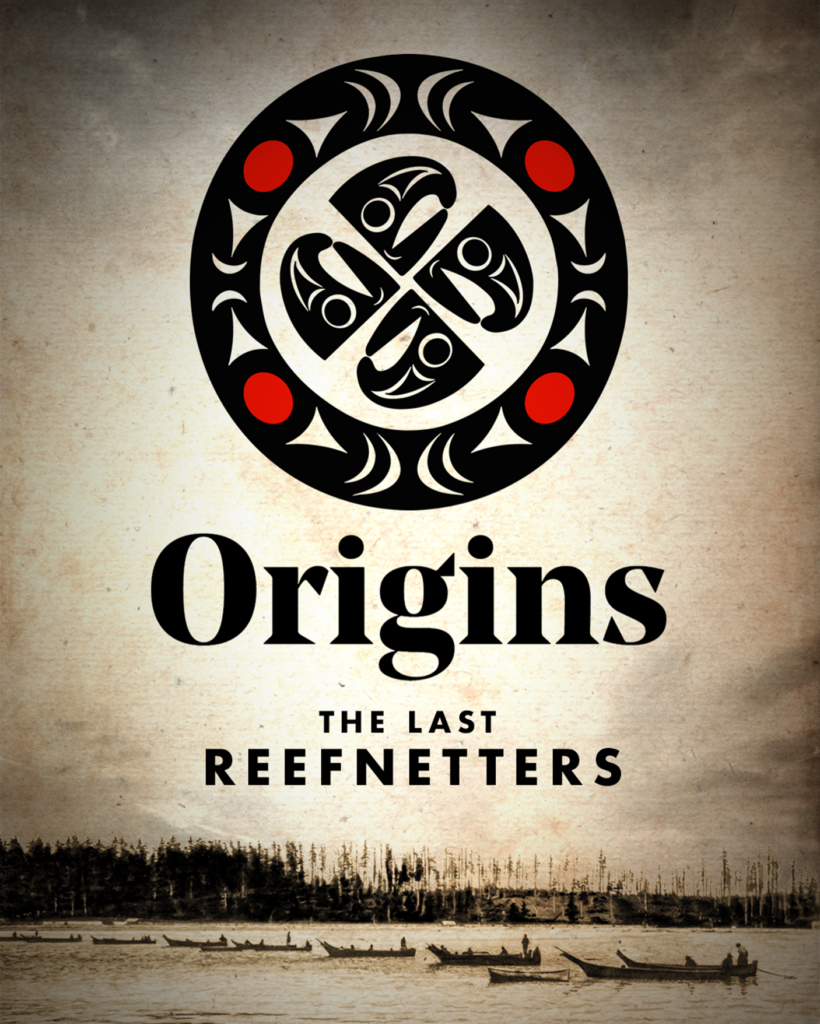Filmmaker Samuel Wolfe of Fishboat Media sits down with Maritime Washington staff to discuss Origins: The Last Reefnetters, a new documentary series on the history and culture of reefnet fishing in the Salish Sea. Funded in part by a grant from the Maritime Washington National Heritage Area, the series explores the innovative reefnet fishing method, developed by the Lummi Nation and other Northern Straits Salish Tribes thousands of years ago, that uses the unique currents near Lummi Island to trap fish in a net suspended between two boats, catching fish without the boats even moving. Samuel’s documentary follows the 12 captains with reefnet licenses left in the world today. Origins: The Last Reefnetters is available from Cascade PBS now!
Maritime Washington (MW): Can you tell us a bit about the inspiration behind this series? What drew you to focus on reefnetting specifically?
Samuel Wolfe (SW): Reefnetting is a beautiful, stubborn paradox. Beautiful in its rich mythology and the way it invites community participation. Stubborn in the sense that it still persists today despite more than a century of contentious conflict and appropriation. And paradoxical in that instead of chasing fish, you’re letting them come to you and even intentionally letting a portion of the catch go free. Really, who puts a hole in their net intentionally? It was all those idiosyncrasies. And there’s still more I’d like to learn.
MW: Why is reefnetting significant to the community and environment?
SW: For the North Straits Salish communities who originally practiced reefnetting, it was their way of life, economically, spiritually, and physically. Families with reefnet sites accumulated sustenance, wealth, and riches to trade, but those harvests were often shared with neighboring Tribes. In terms of the environment, these communities viewed sockeye as their brother, and they treated them as such.
MW: What is the purpose of this documentary?
SW: I’ve described the project as a conversation starter. For one, there’s so much more history and context that we weren’t able to cover because of time constraints. And second, I think our project provokes more questions than it provides answers. But ultimately my hope is that it surfaces an emotional response in viewers and inspires them to conduct further exploration and learning on their own.
MW: As you developed this documentary, were there any particular people or groups that helped you along the way, either on-screen or off?
SW: There were so many groups, teams, and individuals who helped us along the way. Rena Priest started as a writing partner but essentially became a producer throughout the process. Darrell Hillaire and Beth Pielert at Children of the Setting Sun Productions graciously shared their knowledge and connected us with resources inside their storytelling network. Riley Starks at the Salish Center for Sustainable Fishing Methods let us camp on his property when we had early shoots scheduled on Lummi Island. Both Steve Thatcher and Pete and Deb Granger made us breakfast when we showed up to interview them! And of course, the access provided by the Kinley family and Troy and Shirley at Whiteswan Environmental turned out to be the lifeblood of the story. I get emotional when I think back on the experience, and I consider all of them friends.
MW: Were there any unexpected moments that became core to the documentary as you developed it?
SW: The final episode is about a never-before-published manuscript by Wayne Suttles, revered anthropologist from the University of Washington, called Reefnetters of the Salish Sea. Wayne’s estate reached out to Children of the Setting Sun about helping to publish the manuscript a month before I contacted them about the documentary. It was very serendipitous timing!
MW: What was the production process like for this project? How did it differ from others as you prepared for the shoots, especially with a subject as “fin”icky and weather-dependent as fishing?
SW: A huge part of the production process on this project was finding creative ways to bring history to life. Archival photography of original Tribal reefnetting is pretty limited, and footage of it is virtually non-existent. So we solved that by creating a 3D model of a reefnet and doing animation, which turned out to be a fantastic storytelling tool because it enabled us to embrace the mythological aspects of reefnetting instead of just the literal.
Preparing to shoot the actual reefnetting on Lummi Island was stressful because we wouldn’t get another chance at it. The crews are subject to strict quotas from the state, so we were well aware that it could all be over in the span of one weekend. Luckily, we went out there, the weather was beautiful, and we came away with some great material.
MW: What are your hopes for the future of this project?
SW: We’re planning to adapt the series from an episodic format to a short film format so that we can put it on the film festival circuit. Part of that effort will entail doing additional reefnet animation to make the story even more visually impactful. It’s a very time-consuming process, but thankfully a lot of the modeling and prep work has already been done.
Adapting the story to a film festival format will also involve covering more historical/cultural context that we weren’t able to get to because of time constraints. And that will entail additional interviews with academics, Tribal knowledge holders on the other side of the border, etc. We’re really excited to expose the story to a broader audience!
MW: Is there a particular moment in the documentary that you’re especially proud of or one that really stands out to you?
SW: I am very proud of how we captured the spiritual essence of reefnetting. Sustainability and technology [are] usually what gets talked about the most during reefnetting conversations. I’m excited for others to learn about what it actually represents to the Lummi and other North Salish Straits nations.
MW: I understand you worked with a poet on this project. How does poetry factor into the documentary?
SW: I understood we would never be able to cover everything about what reefnetting represents to the Lummi Nation and the other Tribes for whom reefnetting was an essential way of life. We hired Lummi Nation author/poet Rena Priest to write a poem for the prologue of the documentary because we were confident that her work would evoke a sense of scale, beauty, and mystery without having to bog down viewers with lengthy exposition. We only had 8.5 minutes per episode, so it was initially daunting to think about the way we wanted to start the film. Rena’s work was a perfect fit, and she was an amazing collaborator.
MW: What was it like fitting another artist’s work to your vision?
SW: With Rena, it was easy. She is brilliant and makes it look effortless (but I know it isn’t). She took a napkin sketch outline I proposed and transformed it [into] something entirely her own.
MW: Do you have any takeaways for other people working on celebrating, maintaining, and sharing maritime heritage in Washington?
SW: There are so many other stories waiting to be told, so my takeaway is: why not you? A year ago, I had never even heard of reefnetting. And now this project is something that exists in the world. If you’re on the fence about a story you’re passionate about, don’t be afraid to take the leap.

Origins: The Last Reefnetters premiered publicly on Friday, March 21, at 8:50 pm on Cascade PBS.
See more behind the scenes with Samuel Wolfe from Cascade PBS.

